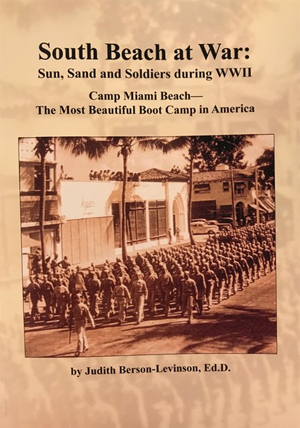|
American Legion Post 346
Cavanaugh Flight Museum
City of Miami Beach
Colony Hotel
38th
Infantry Regiment
2nd Infantry Division Re-enactors
Miami Design Preservation League
Military Vehicle Preservation Assn
Royal South
Beach Condo Hotel
Wolfsonian Museum
Previous Event Coordinators
Dr. Judith Berson-Levinson
Bruce
Lamberto
Vintage Military Vehicle Assn
Military Personnel Courtesy of the 38th Infantry
Regiment 2nd Infantry Division Reinactors
Previous Host Committee
Dr. Judith Berson-Levinson
Jeff Bechtel
Sheldon Brown, WWII Veteran
Miami Design Preservation League
Laura
Jamieson
Miami Beach Botanical Garden
Carolyn Klepser
Historic Researcher
George Neary
Greater Miami Convention & Visitor's Bureau
Joe Pinon
American Legion Post 346
Dona Zemo
Miami Beach Chamber of Commerce
Dr. Judith Berson-Levinson
Julian Goldman, WWII Vet
Bernie Gold, WWII Vet
Aaron Frankel, WWII Vet
Forrest Clark,
WWII Veteran
|
For Information, contact:
Dr Judi Berson-Levinson
|

wwiimemorial.com


Reliable web hosting starts @ $2/month
|
|

W W I I M I A M I B E A C H V E T E R A N S

Read the captivating story of the years America's Playground became "the most beautiful boot camp in America" told by the daughter of a WWII veteran. Between 1942 and 1945 Miami Beach played a significant role in WWII. Nearly half a million men, including matinee idol Clark Gable, took over hotels, restaurants, theaters, and golf courses for training by the Army Air Forces Technical Training Command. Army ground forces infantrymen returning from battle were evaluated in the Army Redistribution Station and a group of young women in the Army Air Forces Communication Detachment were credited with shortening the war by intercepting enemy messages and breaking their codes. The author has been collecting the living memories of these veterans for 19 years ever since organizing the first Miami Beach WWII Veterans Reunion in 1999. This book shares the stories of the veterans, the local residents and couples who met and married against the backdrop of war.

Between 1942 and 1945 Miami Beach played a significant role WWII. Nearly half a million men, including matinee-idol Clark Gable, took over more than 300 hotels and apartment buildings for housing and training headquarters by the Army Air Forces Technical Training Command. By the time the war ended, one-fourth of all Army Air Force officers and one-fifth of the military's enlisted men had been trained in Miami Beach, “the most beautiful boot camp in America.” Another group of hotels and buildings served as an Army Redistribution Station for infantrymen returning from battle. These men were reunited with their wives, debriefed about enemy positions, and given rest and relaxation before being released or reassigned. Young women of the Women’s Army Corps Communications Detachment were also stationed in Miami Beach. They were attributed with shortening the war by deciphering enemy messages and breaking their codes.
Hotel rooms became barracks, hotel dining rooms became mess halls, a movie theater became a testing center, hotels became administrative offices, hotel pools and the ocean were used to teach life saving techniques, golf courses became parade grounds, and the beach was used for rifle ranges and physical training. Thanks to the efforts of preservationists, many of the buildings are still in operation today in the same, if not better condition, than they found them when the Air Force took over the beach and turned it into a training ground. Despite the brutal conditions and rigorous training, their recollections include romps in the ocean, world-class entertainment, fishing trips, and romance.
The troops that passed through Miami Beach claimed that they had been sent to “the most beautiful boot camp in America.” Many of these young servicemen and women “got sand in their shoes” and vowed to return if they survived the war. And return they did, packing up their families and heading South to take advantage of the GI Bill at the University of Miami and buying the houses that were popping up all over Miami Beach. Others returned year after year for vacations. Others returned when they retired. Just as Miami Beach had made an indelible impact on the young GI’s, the returning veterans had a major impact on the economic future of South Florida.
|

|
|
|



